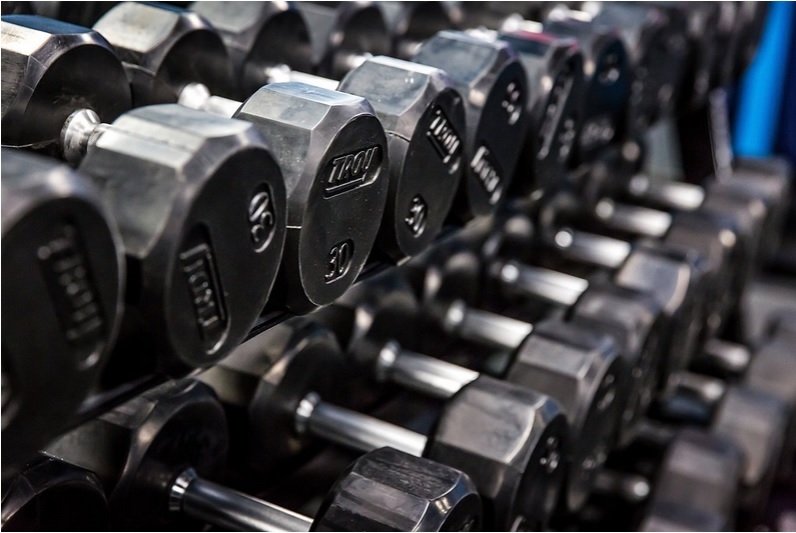
If you resistance train, you undoubtedly know you count several things. You count the number of repetitions you perform in a set, the number of sets you perform in a workout, and you even count (and probably write down somewhere) the amount of weight you lift. You certainly know how many days per week you work out, and you even know how many days you take off between your workouts. But, do you know how much time you take in between sets of any given exercise?
The Neglected Variable
The rest interval between exercises may very well be one of the most important training variables counted (and, for that matter, manipulated) in a resistance training program. That is why it astounds me that nearly every person on the workout floor in the gym seems to completely ignore this critical training variable.
Think about it: when you lift, can you imagine just throwing any amount of weight on the bar and going at a set of curls or squats? Of course not! You know how much weight you need to use for an exercise to be effective. Or, would you ever think of starting a set of leg press without counting the number of repetitions you are performing, stopping when it “feels right?” No way! You know how many reps you should perform going into a set, and you stop when you reach that point. To not count reps, sets, or weight would seem crazy and very haphazard from a training perspective; but what if I told you it’s just as crazy and haphazard to not count (time) your rest intervals.
Let’s Get “Sciencey!”
The amount of time you rest between sets primarily determines two critical physiological responses to training: acute recovery (the amount of recovery that takes place between sets, as opposed to chronic recovery, which happens between workouts) and the body’s metabolic and hormonal responses to resistance training. The concept of acute recovery is pretty straightforward: the longer you rest between sets, the greater your recovery, and the better your performance on subsequent sets of an exercise. Hormonal and metabolic responses are a bit more complex, but they essentially dictate your body’s true physiologic response to resistance training.
An example of a hormonal response to resistance training would be the amount of anabolic hormones released in response to a resistance training session. Anabolic hormones are tissue (i.e., muscle) building agents in the body like growth hormone and testosterone, which signal the body to build more internal protein in skeletal muscle. Muscle head translation: Gainz! In contrast, metabolic responses deal more with the primary fuel source used to perform the resistance training exercises, and different types of resistance training result in different metabolic responses. For example, long rest interval training with very heavy weight helps train the immediate energy system of the body that a sprinter or an offensive lineman would use, while short rest interval training improves the lactic acid energy system used by middle-to-long distance runners.
What’s the Best Rest for Me?
Sounds great, right, but which rest interval is right for you? The answer lies in your training goals, as well as the reasons why you are resistance training.
For Beginners
If you are new to resistance training, your primary goal is to learn technique for the exercises, and begin to build a physiological tolerance to the stresses associated with training. In order to learn technique properly and build this tolerance, you cannot be significantly fatigued. For this reason, your rest interval between exercises should be between 90-120 seconds. This rest interval range is also good for the fitness enthusiast looking for general muscular fitness adaptations to resistance training.
Advanced Lifters
If you are looking to gain muscle mass, shorter rest intervals are best for enhancing the release of anabolic hormones into the bloodstream and getting these hormones to the target tissue. As such, your rest intervals should be kept between 45-75 seconds. If your goal is to enhance muscular strength or power (with power being more speed-strength), your rest interval must be very long, as the goal of this type of training is to use heavy weights and/or high rep speeds. Since this type of training requires a lot of muscular energy (and, therefore, longer recovery after a set for replenishment of that energy), along with flawless technique, your rest interval should be 2-5 minutes between exercises. I realize this rest interval seems long, but if you are doing this type of training properly, you will need every bit of that time. Finally, if your goal is to improve muscular endurance and/or lactic acid tolerance, your rest interval should be 15-30 seconds between sets.
Getting Started
So, now that you know how long to rest between sets, depending on your training goal, the last thing to address is how to put this into practice. Well, this is the easy part. Go to Target or Wal-Mart (or somewhere similar) and buy a cheap digital watch that has a COUNTDOWN timer. A countdown timer can be set to a specific time and will count to zero and beep when it reaches zero. I advise buying a cheap watch because it will go to the gym with you and undoubtedly get banged up (if not broken), so you don’t want to spend a lot. A countdown timer is preferable to a chronological timer that counts up (like a stopwatch), because the ability of the countdown timer to beep when your rest interval is complete can help keep you on task. Lastly, if you are one of those people who likes to exercise your jaw as much as your biceps when you work out, you’ll have to cut down on the jibber-jabber between sets and begin your next set when your rest interval has expired.
The next time you workout, implement the rest interval guidelines outlined in this article, for a more efficient and effective workout!
About the Author:
-

Michael Stack is the founder & CEO of Applied Fitness Solutions and Frontline Fitness Pros. He is a faculty lecturer for the University of Michigan’s School of Kinesiology. He is also the creator and the host of the Wellness Paradox Podcast, produced in conjunction with University of Michigan.
Michael is an exercise physiologist by training and a health entrepreneur, health educator, and fitness industry advocate by trade. He is dedicated to enhancing the standard of practice of, and advocating for, fitness and wellness professionals to ensure they become an essential constituent in the healthcare delivery system.
With a career spanning over three decades in fitness, health, and wellness Michael has a deep knowledge of exercise physiology, health/wellness coaching, lifestyle interventions to mitigate chronic disease and leadership. He is credentialed through the American College of Sports Medicine (ACSM) as an Exercise Physiologist (ACSM-EP), Exercise is Medicine practitioner (ASCM-EIM), and a Physical Activity in Public Health Specialist (ACSM-PAPHS). Michael is a National Strength & Conditioning Association (NSCA) Certified Strength & Conditioning Specialist (CSCS), and a CDC Diabetes Prevention Program (DPP) Lifestyle Coach.
Michael received his undergraduate degree from the University of Michigan’s School of Kinesiology in 2004 and is currently a Master’s of Public Health (MPH) candidate at University of Michigan, with a specific concentration in health behavior and health education.
Michael is a board of directors’ member for the Physical Activity Alliance and Michigan Fitness Clubs Association. He sits on the University of Michigan’s School of Kinesiology Alumni Board of Governors. Michael is an expert curriculum reviewer for the American College of Lifestyle Medicine. Finally, he is a member of the executive leadership team for American Heart Association’s Heart Walk.
Michael lectures nationally for several health/fitness certification and continuing educations, including; IHRSA, the Medical Fitness Association, the National Strength & Conditioning Association, and SCW Fitness.
